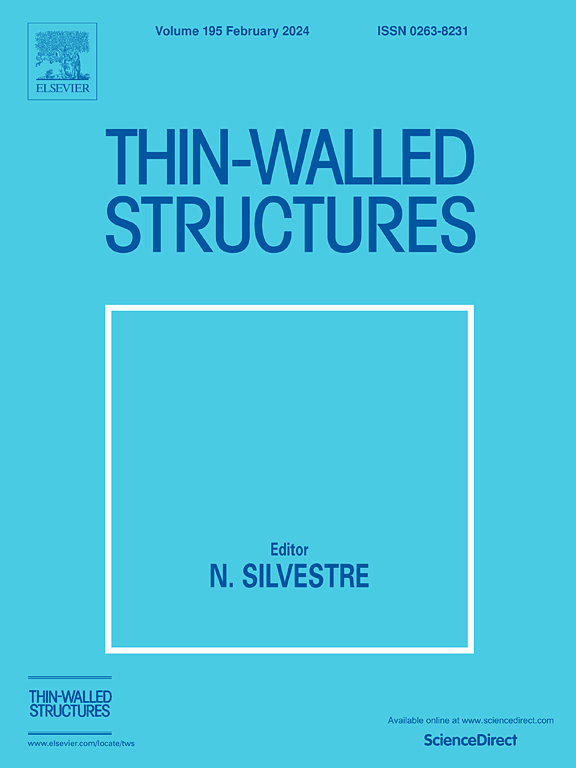Deep learning-based study of strength variance coefficient for large diameter thin-walled structures
IF 5.7
1区 工程技术
Q1 ENGINEERING, CIVIL
引用次数: 0
Abstract
Strength variation coefficient is a basic parameter to carry out structural reliability design and assessment, for the large diameter thin-walled structure test to obtain the strength variation coefficient is expensive, this paper is based on the actual measurement of the product information, the application of finite element simulation and analysis methods, comprehensive consideration of the material properties, structural dimensions and geometrical uncertainty factors, put forward a method for the study of strength variation coefficients of thin-walled structures based on multi-head CNN. Taking the multi-wall panel welded stiffened rocket tank cylinder section as the research object, the geometric imperfection of a single panel is used as a sub-sample, and the particle swarm optimisation based inter-wall panel connection coordination method is used to achieve the geometric imperfection random field construction; relying on a small number of experiments, a multi-head convolutional network structure is used to realise the fusion of uncertain features of material properties, structural dimensions and geometrical imperfections at different scales, to efficiently establish an ‘uncertainty-response’ mapping model, and to realise the prediction of strength variation coefficients at low cost. The research results show that the method is able to identify the complex action law of geometrical imperfection on structural bearing, and the accuracy of the prediction of bearing capacity is more than 99.2%; it can realise the accurate quantitative analysis of the coefficient of variation of the strength of thin-walled structure and its influencing factors, and the predicted coefficient of variation of the structural strength of the structure is reasonably encompassed by the upper limit of the test value.
求助全文
约1分钟内获得全文
求助全文
来源期刊

Thin-Walled Structures
工程技术-工程:土木
CiteScore
9.60
自引率
20.30%
发文量
801
审稿时长
66 days
期刊介绍:
Thin-walled structures comprises an important and growing proportion of engineering construction with areas of application becoming increasingly diverse, ranging from aircraft, bridges, ships and oil rigs to storage vessels, industrial buildings and warehouses.
Many factors, including cost and weight economy, new materials and processes and the growth of powerful methods of analysis have contributed to this growth, and led to the need for a journal which concentrates specifically on structures in which problems arise due to the thinness of the walls. This field includes cold– formed sections, plate and shell structures, reinforced plastics structures and aluminium structures, and is of importance in many branches of engineering.
The primary criterion for consideration of papers in Thin–Walled Structures is that they must be concerned with thin–walled structures or the basic problems inherent in thin–walled structures. Provided this criterion is satisfied no restriction is placed on the type of construction, material or field of application. Papers on theory, experiment, design, etc., are published and it is expected that many papers will contain aspects of all three.
 求助内容:
求助内容: 应助结果提醒方式:
应助结果提醒方式:


